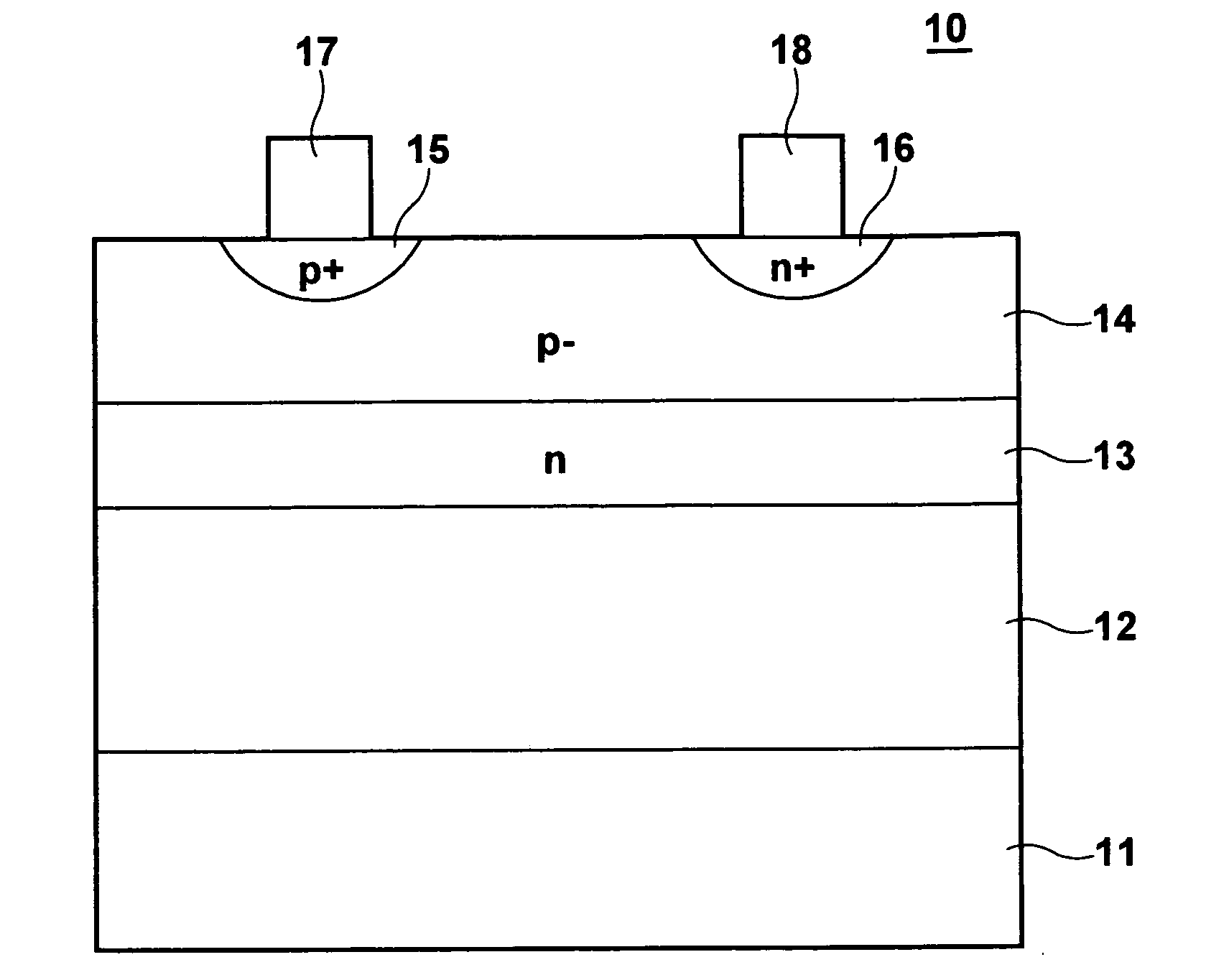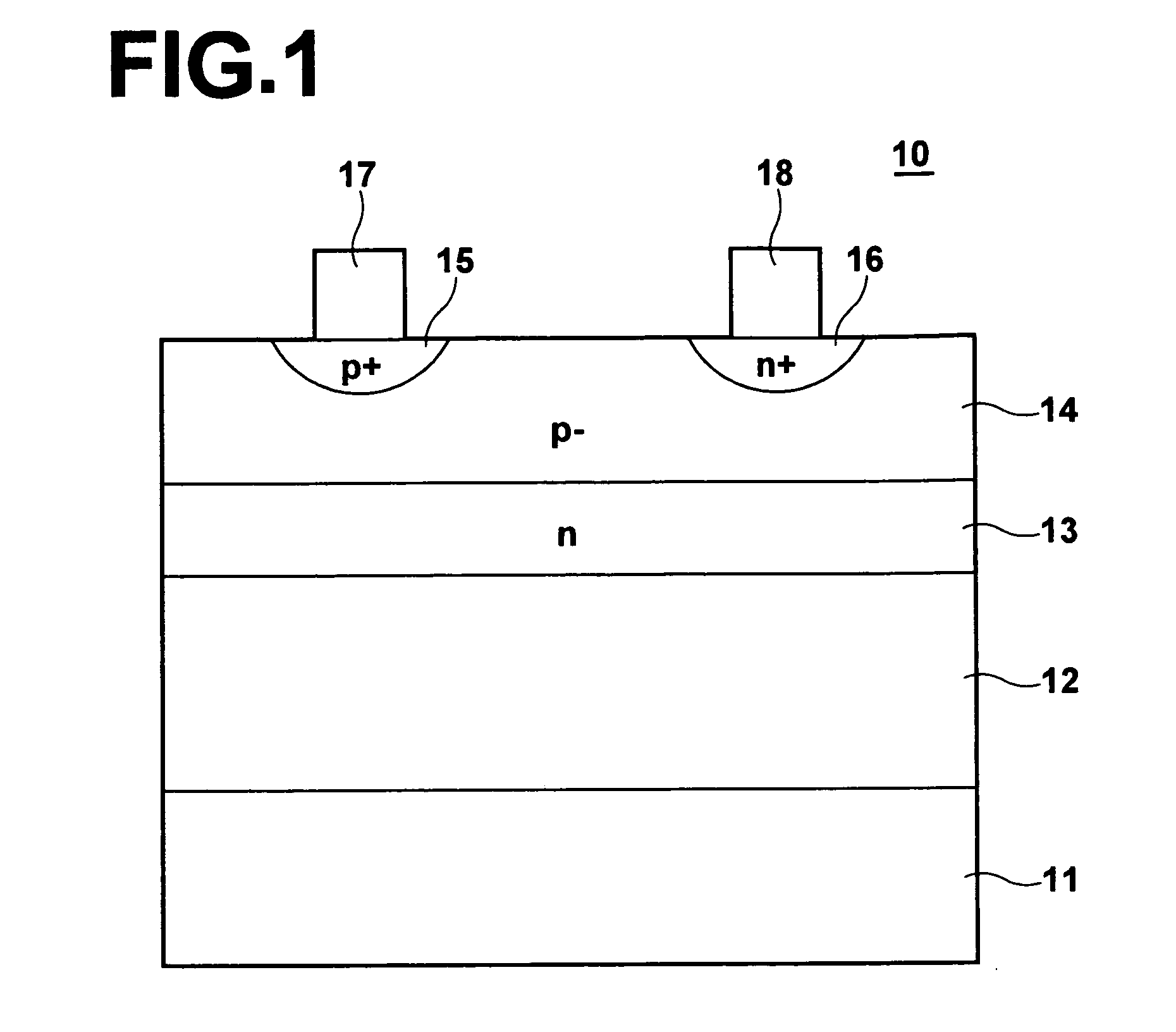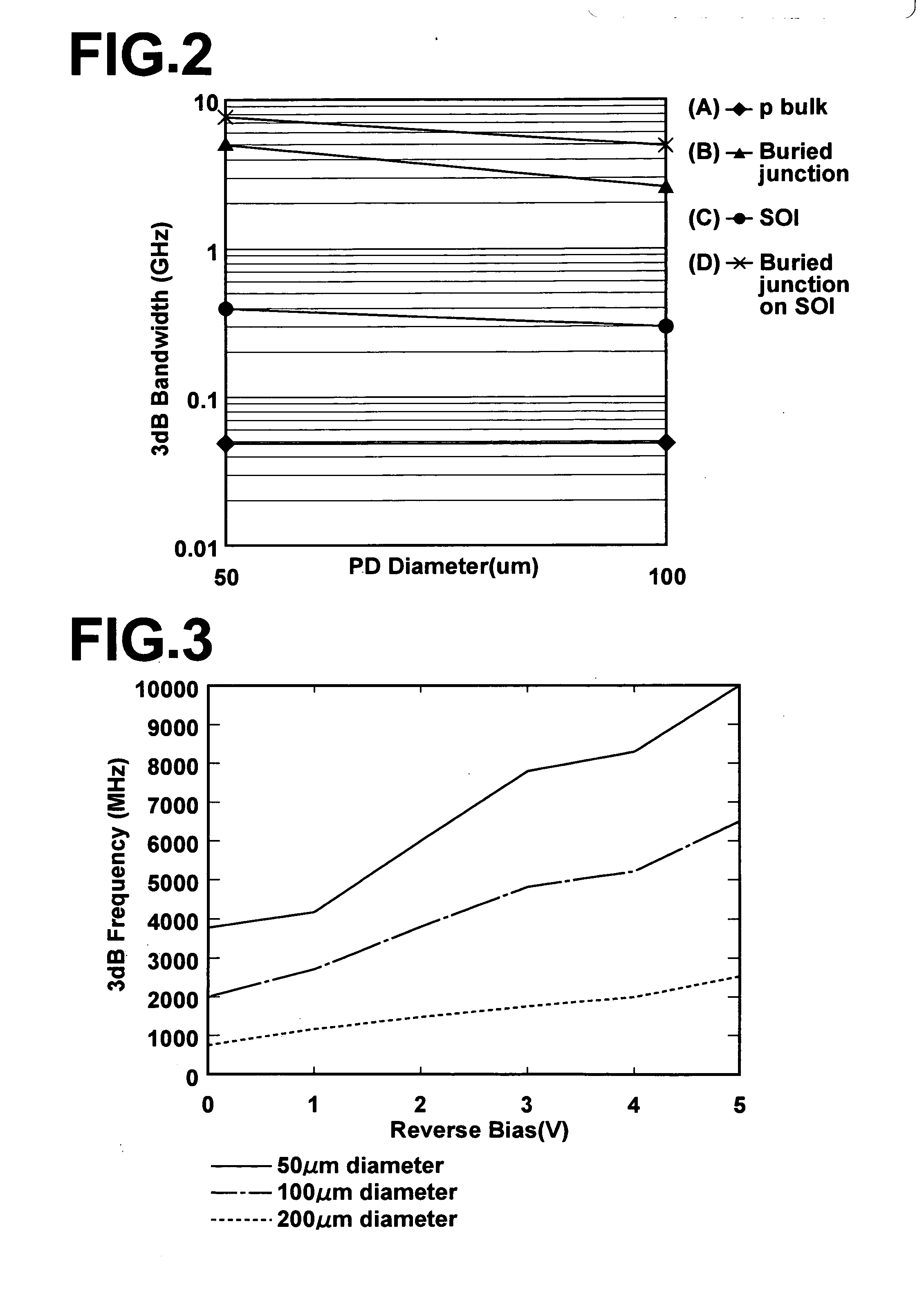Photodetector and manufacturing method thereof
- Summary
- Abstract
- Description
- Claims
- Application Information
AI Technical Summary
Benefits of technology
Problems solved by technology
Method used
Image
Examples
first embodiment
[0055]FIG. 1 schematically illustrates the side shape of the lateral photodetector according to a first embodiment of the present invention. In the present embodiment, the photodetector is, by way of example, a photodiode. As illustrated, the photodiode 10 includes a substrate 11 on which a barrier layer 12, n-type active region (absorption region) 13, and a p-type active region 14 are stacked in this order. Further, a p+ region 15 and an n+ region 16, each having a finger-like shape, are arranged parallel to the surface of the substrate 11 near the surface of the p-type active region 14. A cathode 17 and an anode 18 are connected to the p+ region 15 and n+ region 16 respectively.
[0056]When light is irradiated on the photodiode 10, which has the aforementioned structure, from above in the drawing, carriers (holes and electrons) move between the p+ region 15 and n+ region 16, and a current flows through a load, if it is connected between the cathode 17 and anode 18, so that the light...
second embodiment
[0069]Next, a second embodiment of the present invention will be described. FIG. 9 schematically illustrates the side shape of the lateral photodetector according to the second embodiment of the present invention. In the FIG. 9, components identical to those in FIG. 1 are given the same reference numerals and will not be elaborated upon further here unless otherwise specifically required (the same applies to hereinafter).
[0070]Here also, the photodetector in the present invention is, by way of example, a photodiode. The photodiode 20 differs from the photodiode 10 shown in FIG. 1 in that it uses a higher doping density substrate as the SOI substrate, thus an n-type (n+-type) active region 23 having a higher doping density that the n-type active region 13 is formed. More specifically, the doping density is 1×1019 cm−3.
[0071]Provision of the n-type (n+-type) active region 23 having such high doping density may provide the effect to extend the depletion layer upward, i.e, opposite to t...
third embodiment
[0072]Next, a third embodiment of the present invention will be described. FIG. 10 illustrates the side shape of the lateral photodetector according to the third embodiment of the present invention. In the present embodiment also, the photodetector is, by way of example, a photodiode. The photodiode 30 differs from the photodiode 10 shown in FIG. 1 in that it includes an n-type active region 33 having varied thickness instead of the planar n-type active layer 13. That is, the n-type active region 33 is formed such that the thickness in the portion under the n+ region 16 and anode 18 is greater than in the portion under the p+ region 15 and cathode 17.
[0073]The photodiode 30 according to the present embodiment may basically provide the identical advantageous effects to those in the first and second embodiments. In addition, it may provide a greater electric field amplifying effect since it has a larger interface area between the n-type active region 33 and p-type active region 14, an...
PUM
 Login to view more
Login to view more Abstract
Description
Claims
Application Information
 Login to view more
Login to view more - R&D Engineer
- R&D Manager
- IP Professional
- Industry Leading Data Capabilities
- Powerful AI technology
- Patent DNA Extraction
Browse by: Latest US Patents, China's latest patents, Technical Efficacy Thesaurus, Application Domain, Technology Topic.
© 2024 PatSnap. All rights reserved.Legal|Privacy policy|Modern Slavery Act Transparency Statement|Sitemap



